
| Japan Heritage Kisoji |
| Cultural Properties |
| Travel Column |
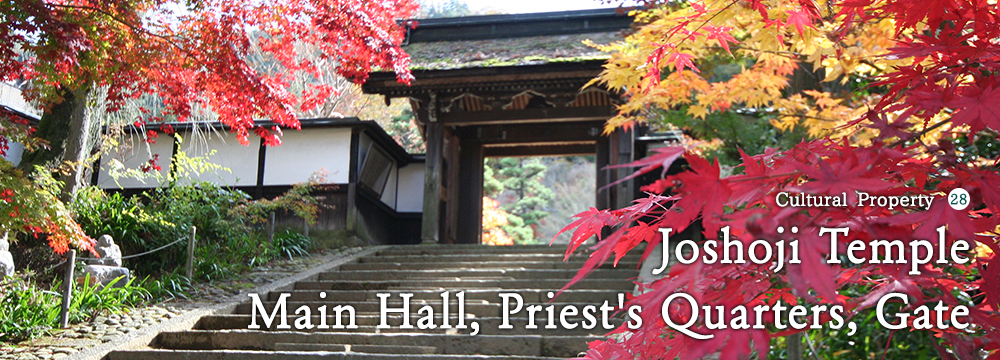
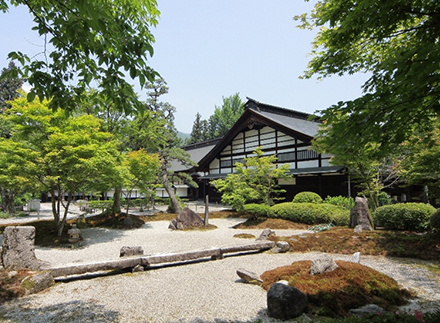
A document states, “A man named Kin’ei served sobakiri at Joshoji Temple,” marking the oldest record of sobakiri (aka soba noodles). It also shows soba was the local specialty of the Kiso Valley.
Joshoji Temple belongs to the Myoshinji sect of the Rinzai school. It is the oldest of the Three Temples of Kiso. The corridor with uguisubari (floors designed to make a chirping sound when walked upon) and the garden give the impression of Little Kyoto in Kiso.
Joshoji Temple stores the documents that are related to the Kiso clan. Among them, the first record of sobakiri in Japan is found in Joshoji’s temple records (butsudenji-kiroku) (1574).
It was designated as a National Important Cultural Property.
Joshoji Temple is a National Important Cultural Property in Suhara-juku, and is the oldest property in Kisoji.
Chikatoyo Minamoto, from the 11th generation of the Kiso clan, established the temple on the bank of the Kisogawa River in the late 14th century.
After that, the temple was destroyed by a flood three times, and in 1598 it was reconstructed in the current place.
At the temple, the spirit tablet of Yoshimasa Kiso, a warlord who ruled the Kiso Valley in the Warring States period, is enshrined. In addition, the statue of a seated Bodhidharma, which is the largest in the East and made of Kiso-hinoki cypress, is another thing to see.
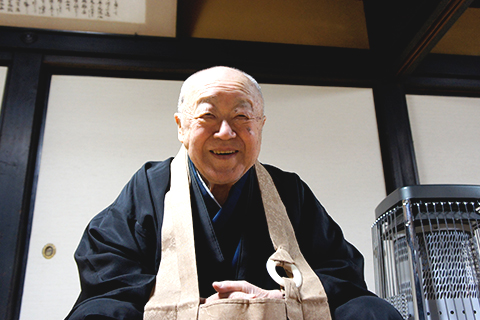
Mr. Fumiaki Matsuba, 30th chief priest of Joshoji Temple
We interviewed Mr. Fumiaki Matsuba and Mr. Fumihiro Matsuba. The former is the 30th chief priest of Joshoji Temple, and the latter is a kansei osho (Buddhist priest).
“Joshoji is a Kyoto style temple, which is rare in Kiso. The current buildings are in good condition. The whole temple is simple, but has a magnificence and strength about it,” he said.
The gate, the main hall, and the priest's quarters are National Important Cultural Properties.
According to an old document from the Muromachi period (1336 - 1573), Joshoji Temple is where soba was served for the first time in Japan. We were surprised that soba has been a local specialty of Kiso for such a long time.
The Josho-daruma (statue of a seated Bodhidharma) in the main hall is made of six cubic meters of Kiso-hinoki. Its size is overwhelming.
Some people sit in Zen meditation in front of the statue.”
“I would like for you to make time for yourself as much as possible. Please value the time for introspection,” Mr. Matsuba suggested kindly.
The temple has a remarkable open garden. We visited the temple in winter, and there was still snow. The pure and calm winter atmosphere was nice, but we also felt like seeing the garden in early summer and fall, too.
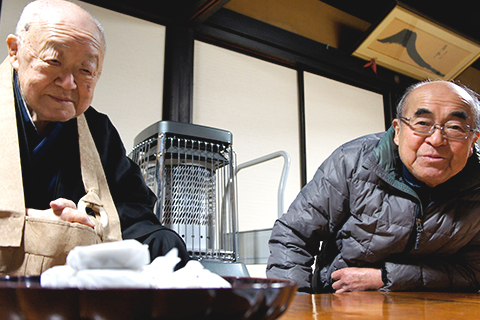
Mr. Fumiaki Matsuba, 30th chief priest of Joshoji Temple, and Mr. Fumihiro Matsuba, kansei osho (Buddhist priest)
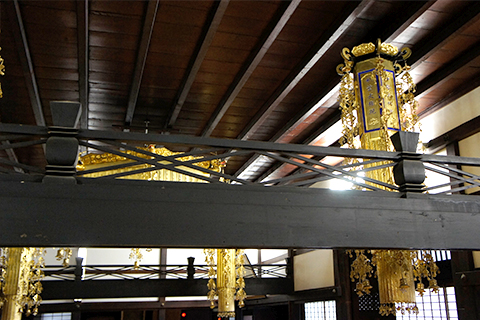
Striking transom in the main hall
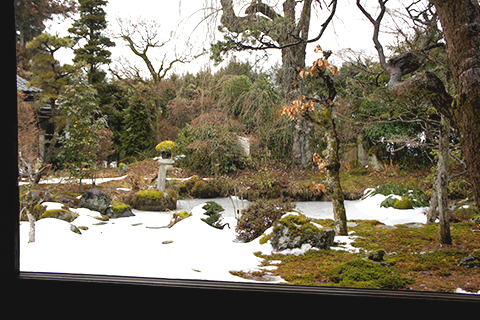
Remarkable open garden
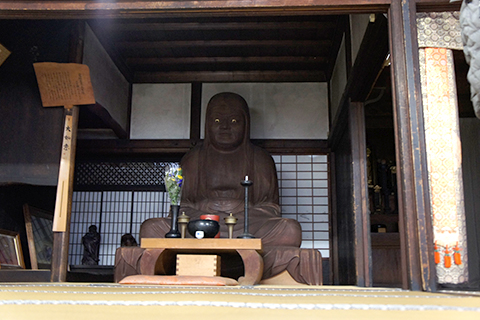
Statue of a seated Bodhidharma, largest in the East
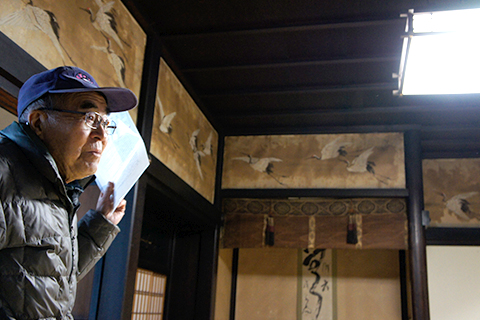
Thousands of cranes on the wallpaper of the study room
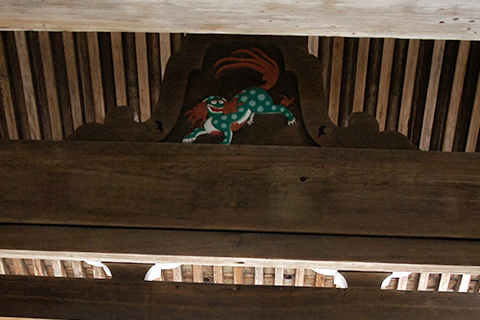
Brightly-colored lion on the gate
In autumn, we can hear gasps from the tourists who come to the gate. They say that the atmosphere makes them feel like they have come to Kyoto.
You will be welcomed by seven weeping cherry trees in April and alpine roses in early May. The kind chief priest at the temple is waiting to welcome you all year round.
The main hall, the gate, the priest's quarters (all National Important Cultural Properties), the corridor with uguisubari, and the garden.
10 minutes’ walk
From the Ina Interchange on National road 361, 60 minutes by car
National road 19 and 256, 45 minutes by car
831-1 Suhara, Okuwa Village, Kiso-gun, Nagano Prefecture
Phone:0264-55-3031
| View All Cultural Properties |